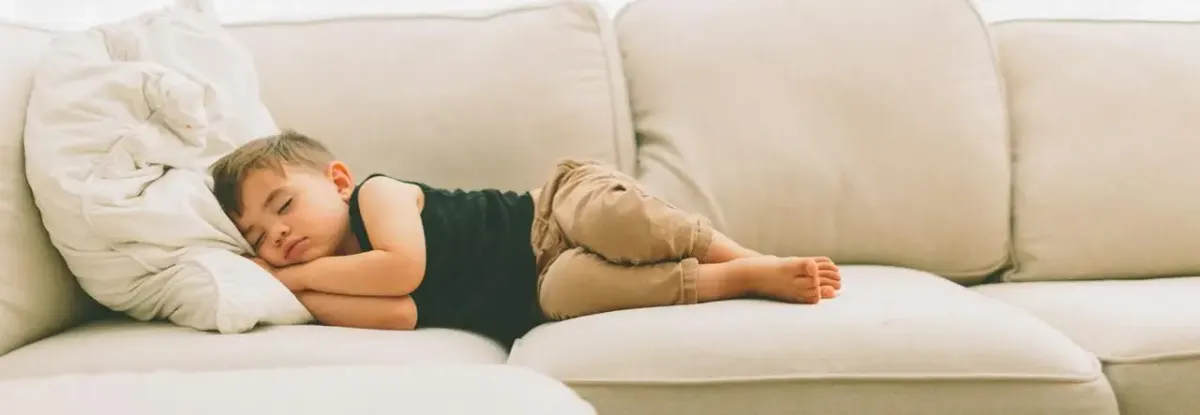What is sleepwalking in children?
When a child wakes up in the middle of sleep without realizing it, it’s known as pediatric sleepwalking. Another name for it is somnambulism. The majority of youngsters who exhibit sleepwalking are between the ages of 4 and 8.
The majority of sleepwalking kids start an hour or two after they go to sleep. Episodes of sleepwalking often last five to fifteen minutes. Usually harmless, this behavior is outgrown by most kids. But, it can be dangerous if left unaddressed. It’s important to protect your child from possible injury from sleepwalking.
What signs of sleepwalking are present?
The most prevalent sign of sleepwalking may be walking while you’re asleep, but the disorder can also involve other behaviors.
Symptoms of sleepwalking can include:
Repetition of actions while sitting up in bed
waking up and moving around the house, mumbling or talking while you’re asleep, not reacting to commands, or making awkward movements
Urinating in inappropriate locations and engaging in recurrent or habitual actions, such opening and closing doors
Why do people sleepwalk?
The following are some of the factors that can lead to sleepwalking:
exhaustion or sleep deprivation
erratic sleeping patterns
illness or fever; stress or anxiety; a new sleeping environment; or specific drugs, such as sedatives, stimulants, and antihistamines
Sleepwalking in the family history
Even though it is rare, sleepwalking may indicate a medical issue. These circumstances could consist of:
Short-term cessation of breathing during the night is known as sleep apnea.
Night terrors are severe dreams that happen when you’re sleeping deeply.
migraines
RLS, or restless legs syndrome
head injuries
Even though it is rare, sleepwalking may indicate a medical issue. These circumstances could consist of:
Short-term cessation of breathing during the night is known as sleep apnea.
Night terrors are severe dreams that happen when you’re sleeping deeply.
migraines
RLS, or restless legs syndrome
head injuries
Treatments for sleepwalking
Try gently guiding your youngster back to bed if you observe them sleepwalking. The sleepwalker may become agitated if you attempt to wake them. Rather, just verbally reassure your child and assist them in getting back to sleep.
To keep your child secure, you can also implement safety precautions throughout the house. These consist of:
Closing and locking all doors and windows at night, installing alarms on doors and windows, or placing locks out of your child’s reach, clearing away objects that could trip them up, removing breakable and sharp objects from the area around their bed, preventing them from sleeping in a bunk bed, installing safety gates in front of stairs or doorways, lowering the hot water heater’s temperature to avoid burns, and keeping keys out of reach
Making a diagnosis
Your doctor may want to perform a physical and psychological examination to rule out other conditions that can cause sleepwalking. If your child’s behavior is due to another medical condition, treatment is required for the underlying problem. Generally, a doctor can diagnose sleepwalking based on other family members’ reports of the child’s behavior.
The doctor might prescribe a sleep study if they suspect another sleep issue, such sleep apnea. Spending the night in a sleep lab is part of a sleep research. To measure the child’s heart rate, brain waves, breathing rate, muscle tension, eye and leg movement, and blood oxygen level, electrodes are affixed to certain body areas. The child may potentially be captured on video while they sleep.
If sleepwalking is causing you problems, your doctor might suggest a method called planned awakening. This entails keeping an eye on your child for a few nights to figure out when the sleepwalking typically happens, and then waking them up fifteen minutes prior to the anticipated sleepwalking. This can assist regulate sleepwalking behavior and restore the child’s sleep cycle.
If sleepwalking is causing dangerous behaviors or excessive fatigue, a doctor may prescribe medication, such as benzodiazepines (psychoactive drugs typically prescribed to treat anxiety) or antidepressants.

